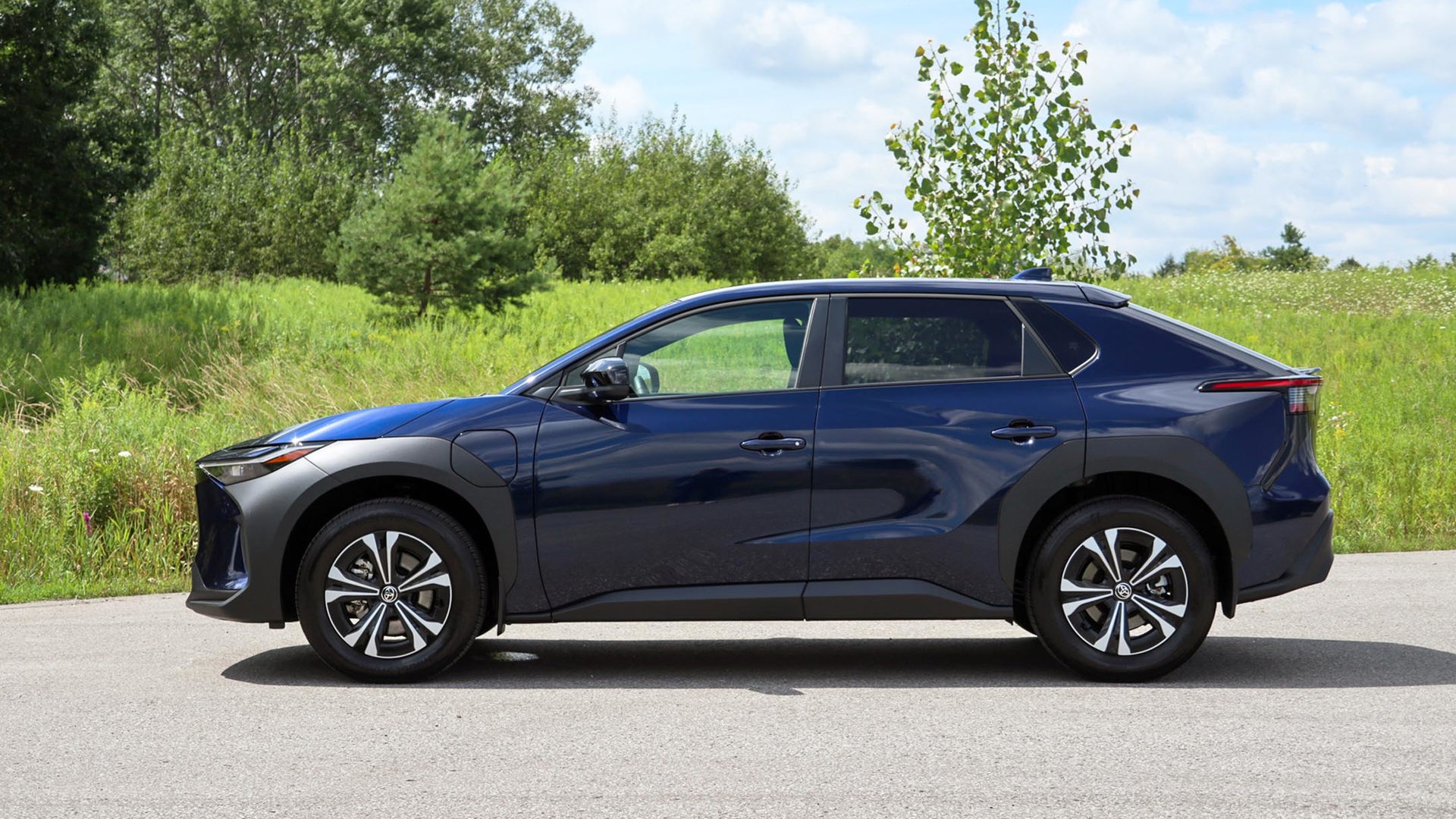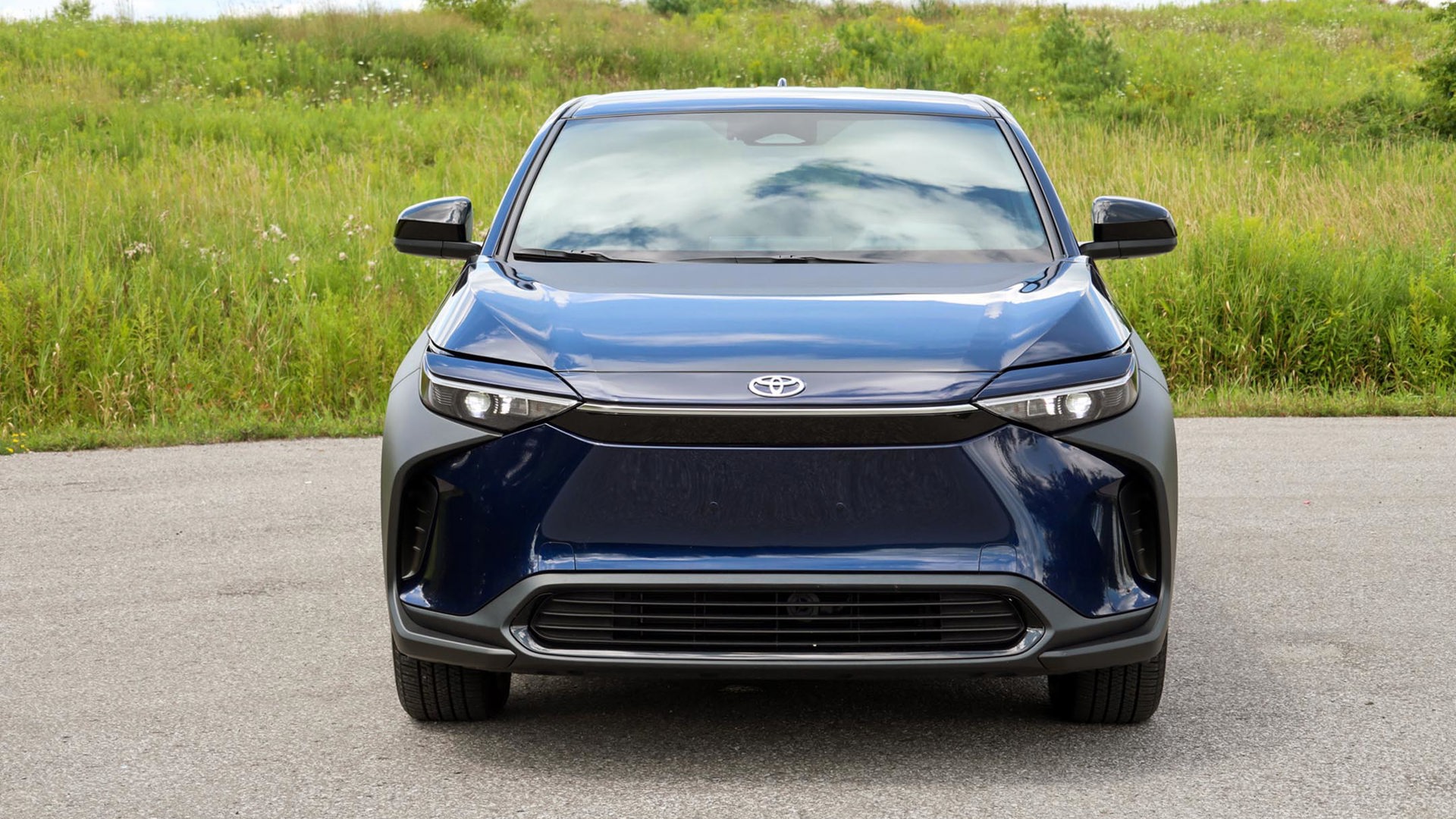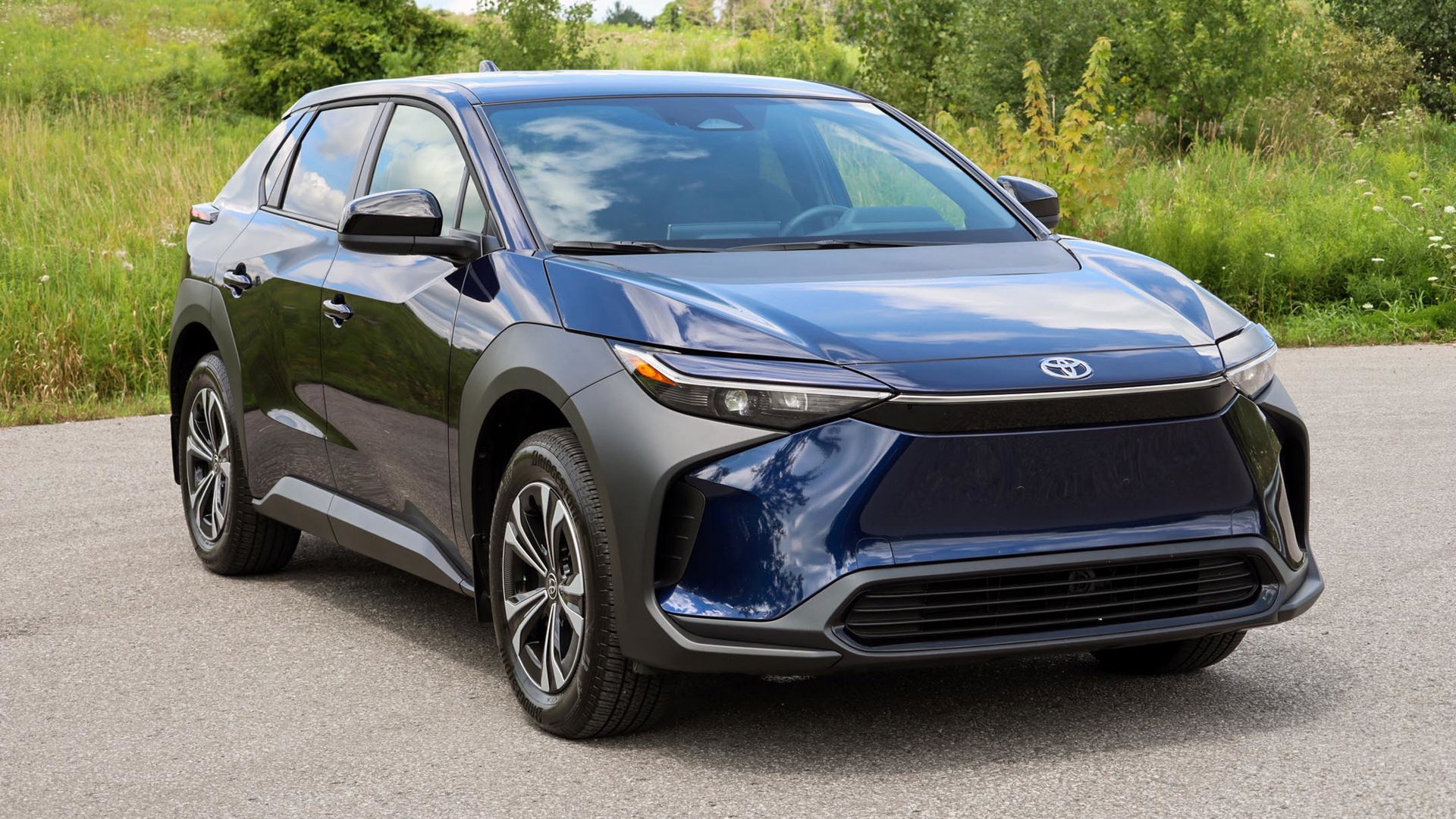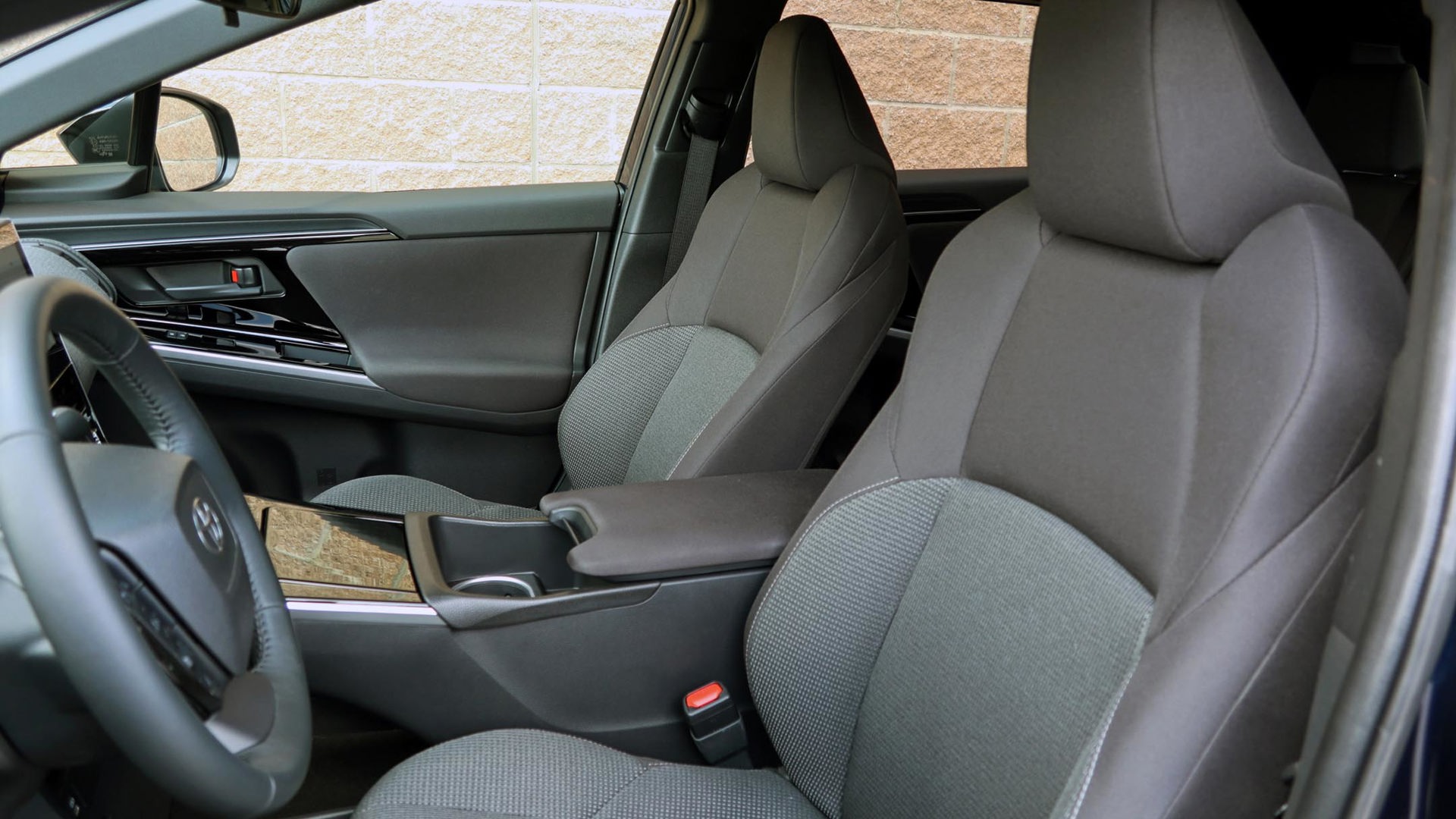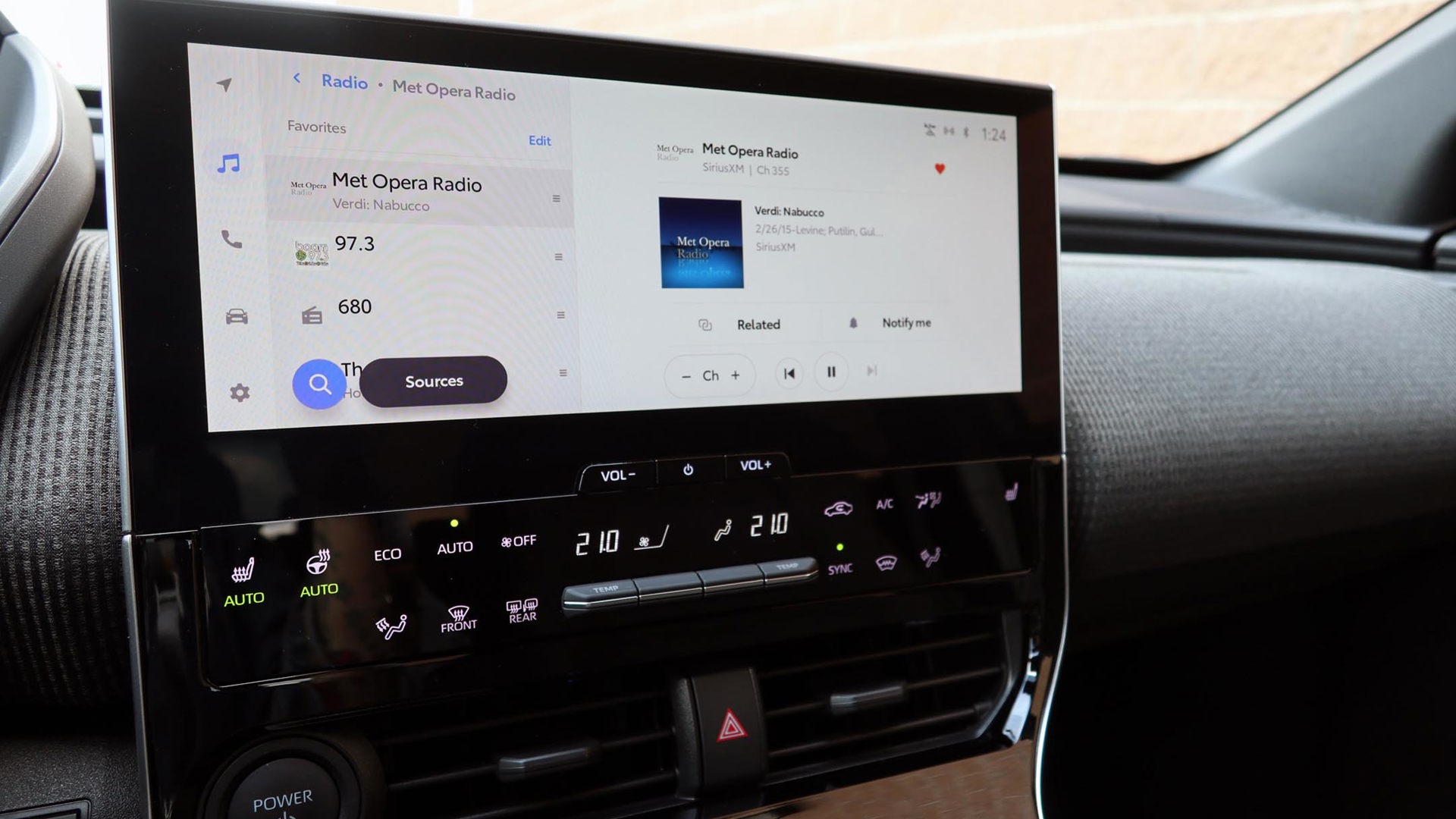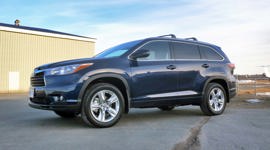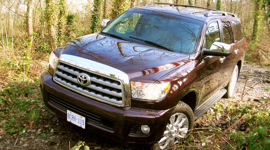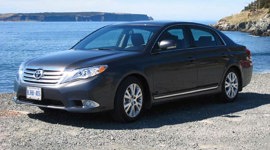 AutoTrader SCORE
AutoTrader SCORE
-
STYLING7/10
-
Safety8/10
-
PRACTICALITY8/10
-
USER-FRIENDLINESS8/10
-
FEATURES8/10
-
POWER8/10
-
COMFORT8/10
-
DRIVING FEEL8/10
-
FUEL ECONOMY8/10
-
VALUE8/10
Toyota pioneered the modern gas-electric hybrid, but it’s only now going fully electric with the all-new 2023 Toyota bZ4X.
The unusual name – which I dubbed the busy forest as a way to remember it – stands for Beyond Zero 4WD Crossover. Despite the name, the two cheapest trims are front-wheel drive (FWD) only.
It was developed as a joint venture with Subaru, which makes the virtually identical – but all-wheel-drive-only – Solterra. The bZ4X starts as the FWD-only L at $46,880, and then there’s my LE tester at $51,880 – both including a non-negotiable delivery fee of $1,890 but before any tax rebates. The all-wheel-drive (AWD) XLE is $56,880, and can be optioned with a Technology package at $64,640. The bZ4X’s current availability is limited to British Columbia and Quebec.
Styling: 7/10
The bZ4X’s crossover styling is a bit heavy-handed, with its bulky matte-black cladding. All trims include 18-inch wheels. The dash is similar to the one found in the redesigned Toyota Prius, with a high-mounted instrument cluster above the squared-off steering column. The fabric-covered dash looks and feels nice.
While the Prius has a dash-mounted centre touchscreen, the bZ4X’s tablet-style display rises out of the centre console, which is finished in high-gloss black plastic. It’s all wrong, because it blindingly reflects sunlight like a mirror.
Safety: 8/10
The bZ4X wasn’t yet rated by the United States National Highway Traffic Safety Administration (NHTSA) at time of writing, but it earned the top “Good” spot in all testing conducted by the Insurance Institute for Highway Safety (IIHS), including the updated side-impact test that better simulates being struck by a larger SUV. Even so, its “Poor” headlight rating means it misses out on one of the not-for-profit’s coveted awards.
All trims come with adaptive cruise control, emergency front braking, lane-keep assist, and the back-up camera that’s mandatory on all new vehicles, but blind-spot monitoring with rear cross-traffic alert comes only on the LE and XLE. That top trim further adds emergency rear braking.
Features: 8/10
The base bZ4X L includes an eight-inch touchscreen, USB Type-A and Type-C charging ports, cloth seats, dual-zone automatic climate control, auto-levelling LED headlights, heated mirrors, and variable intermittent wipers. My next-step-up LE substituted a 12.3-inch centre screen for the eight-inch one, plus a power tailgate, heated front seats and steering wheel, under-dash radiant leg-and-foot warmers, and rain-sensing wipers.
The XLE then adds a wireless charger, fabric and faux leather upholstery, an auto-dimming mirror, cargo privacy cover, and panoramic sunroof. Its available Technology package beefs that up with a hands-free tailgate, ventilated front seats, a power-adjustable driver’s seat, advanced parking assist, and 20-inch wheels.
User-Friendliness: 8/10
While most of the bZ4X’s climate functions are icons, they’re on a dedicated panel rather than in the centre screen’s menus, and the temperature controls are toggle switches. The stereo volume buttons are better than a slider icon, but nowhere near as good as a simple dial. The drive modes are buttons on the console.
Visibility is good, but thanks to that odd combination of steering column and far-forward instrument cluster, I found it difficult to find a seating position where the wheel didn’t obstruct some of the cluster’s readout.
I really like that the charge ports are protected by plastic covers that flip open when you spring their latches. Most electric vehicles (EVs) use rubber covers on floppy tethers that are far less convenient.
Practicality: 8/10
The 2023 Toyota bZ4X has 784 L of cargo space with the rear seats up, and 1,611 L when they’re folded down. That’s more space behind the back seats than all-electric rivals such as the Nissan Ariya and the bZ4X’s cousin Subaru Solterra, although less than the 858 L in the Volkswagen ID.4. The liftover is low, and there are hooks for securing grocery bags – something every sport utility vehicle should have. The electric motor is under the hood so there’s no frunk.
Unusually, the bZ4X doesn’t have a glove box – apparently to accommodate the radiant leg-and-foot warmer. But there’s an open bin under the centre console, and storage cubbies up top on it.
Comfort: 8/10
The bZ4X is roomy inside for its exterior size, and while most of its rivals have a bit more legroom in the front or rear seats, the differences between them are minor. The front seats are sculpted and supportive; and while the rear seats are flatter, they’ll still keep passengers comfy back there. The ride is smooth and only the nastiest road imperfections make their way into the cabin.
Power: 8/10
The bZ4X L and LE use a single motor that drives the front wheels, making 201 hp (150 kW) and 196 lb-ft of torque, with single-speed automatic transmission. That’s the same as the Subaru Solterra, while the Volkswagen ID.4 has the same horsepower but 229 lb-ft of torque. The Kia EV6 beats both at 225 hp and 320 lb-ft of torque in its rear-drive-only configuration. Opt for the bZ4X in all-wheel drive, with two motors, and they combine for 214 hp and 248 lb-ft of torque.
While not as powerful as the AWD version, my tester was fine for everything I needed it to do. It’s sprightly from a stop, reaches highway speeds promptly, and still has enough guts as needed for passing.
Driving Feel: 8/10
There’s very little steering feel, but the bZ4X reacts quickly and accurately to steering input, and while it’s not a sports machine, it’s still fun to drive. As with most EVs, its low-mounted battery brings down its centre of gravity, which in turn helps reduce body roll and improve handling. As an everyday driver, it does pretty much what it’s supposed to do.
A console-mounted button increases regenerative braking, which captures more otherwise-wasted deceleration energy and feeds it back into the battery. It slows the vehicle considerably when you take your foot off the throttle, but it’s not capable of so-called “one-pedal” driving, where it comes completely to a stop without using the brake pedal. It’s common on many EVs and a popular feature for many drivers, and it’s surprising that the bZ4X doesn’t have it.
Fuel Economy: 8/10
The bZ4X is rated by Natural Resources Canada (NRCan) for a range of 406 km in FWD, and 367 km in AWD. Of course, that’s dependent on several factors, including driving habits and ambient temperature. At one point, freshly charged up on a warm day, the gauge gave a rather optimistic range of 455 km – and which promptly dropped to 360 km when I turned on the climate control. All EVs experience some range loss when heating or cooling the cabin, but that’s the most I’ve ever seen an estimated range fall because of it.
Among two-wheel-drive rivals, the Nissan Ariya is rated at 348 km; the Chevrolet Bolt EUV at 397 km; and, depending on battery size, the Volkswagen ID.4 is 336 or 443 km, and the Kia EV6 is 373 to 499 km. The bZ4X is rated at 1.8 Le/100 km in the city, 2.2 on the highway, and 2.0 in combined driving. (That’s for litres equivalent, comparing the electrical energy to corresponding gasoline energy, and it’s within decimal-places of its rivals.)
Value: 8/10
The bZ4X in FWD starts at $46,880 in L trim and $51,880 for the LE. The AWD trims are the XLE at $56,880 and XLE Technology at $64,640. This Toyota’s Subaru cousin is AWD-only and runs from $56,290 to $64,090.
Among some of its two-wheel-drive competitors, the Chevrolet Bolt EUV starts at $42,348, but others are pricier: the Volkswagen ID.4 at $48,545; the Kia EV6 at $49,995; and the Nissan Ariya at approximately $52,500, all prices including delivery but before any applicable rebates.
The Verdict
From behind the wheel, my tester didn’t feel like an almost-$52,000 vehicle, but EVs still aren’t inexpensive and the 2023 Toyota bZ4X is priced competitively in the segment. If you’re ready to plug in, give Toyota’s first-ever electric a look.
| Engine Displacement | 150 kW |
|---|---|
| Engine Cylinders | Front electric motor |
| Peak Horsepower | 201 hp |
| Peak Torque | 196 lb-ft |
| Fuel Economy | 1.8 / 2.2 / 2.0 Le/100 km, 16.0 / 19.5 / 17.6 kWh/100 km cty/hwy/cmb; 406 km est. range |
| Cargo Space | 784 / 1,611 L seats up/down |
| Model Tested | 2023 Toyota bZ4X LE |
| Base Price | $49,990 |
| A/C Tax | $100 |
| Destination Fee | $1,890 |
| Price as Tested | $51,980 |
|
Optional Equipment
None
|
|


